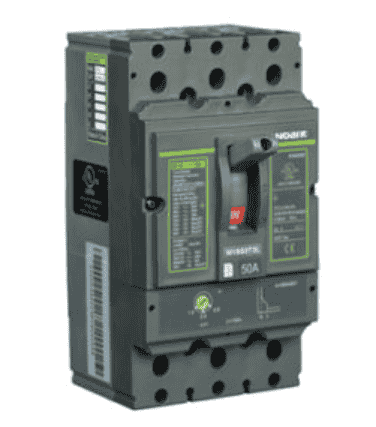When it comes to protecting money, important documents, or precious belongings, the role of vault door manufacturers cannot be underestimated. These manufacturers specialize in designing and producing strong, secure doors that are meant to withstand extreme conditions and unauthorized access. Whether you’re a business owner, a bank manager, or simply curious about security, understanding how these doors work and what makes them special can be fascinating.
Unlike ordinary doors, vault doors are engineered with multiple layers of protection. Bank vault manufacturers focus not only on strength but also on smart design that combines technology and craftsmanship. Think of it as building a fortress for your valuables, but in the form of a door!
Materials That Make Vault Doors Unbreakable
One of the key aspects that vault door manufacturers emphasize is the quality of materials. High-grade steel, reinforced alloys, and composite materials are standard in modern vault doors. Here’s why:
Steel Layers: Most vault doors have multiple layers of steel, sometimes combined with other metals to enhance strength.
Fire-Resistant Materials: Many vault doors are designed to survive extreme heat, protecting cash, documents, and digital storage devices.
Impact-Resistant Core: Some doors include a core made from special concrete or composite materials that absorb impact and prevent drilling.
Imagine trying to open a vault door with just a hammer and chisel. The combination of steel, reinforced alloys, and specialized cores makes it nearly impossible without advanced tools or codes. This is why banks and businesses trust bank vault manufacturers to deliver high-security doors.
Locking Mechanisms That Are Hard to Beat
A strong door alone is not enough. Vault door manufacturers also focus on advanced locking systems that prevent unauthorized access. Modern vaults often include:
Combination Locks: Classic dial locks that require precise sequences to open.
Time-Lock Systems: These locks can only be opened at certain times, adding an extra layer of security.
Biometric Access: Fingerprint, retina, or voice recognition can control entry.
Electronic Keypads: Digital codes that can be changed frequently to ensure security.
Banks and high-security facilities often use multiple locking systems simultaneously. This concept, called “layered security,” makes it extremely difficult for intruders to breach a vault, even if they somehow bypass one lock.
The Importance of Design in Vault Door Manufacturing
A vault door isn’t just a steel wall—it’s a carefully engineered product. Bank vault manufacturers take many design factors into account:
-
Hinges and Bolts: Hidden or reinforced hinges make it almost impossible to remove the door. Multiple bolts extend into the frame, locking it securely.
-
Seals and Insulation: Doors often have seals to protect against smoke, water, and heat.
-
Custom Sizes: Depending on the facility, vault doors can be custom-made to fit any space while maintaining full security.
Good design ensures that the vault door is not only strong but also practical. For example, a bank might need a door that swings smoothly even if it weighs several tons. This balance of engineering and usability is a hallmark of reputable vault door manufacturers.
Technology and Innovation in Vault Security
The modern world has transformed vaults from purely mechanical fortresses to high-tech security hubs. Many vault door manufacturers now integrate technology for enhanced protection:
Monitoring Systems: Sensors that alert authorities if someone tampers with the door.
Remote Access Control: Authorized personnel can monitor and control vault access from anywhere.
Audit Trails: Electronic records of every entry attempt help track suspicious activity.
Integration with Alarm Systems: Vaults can be connected to building-wide security systems.
Technology doesn’t replace strong materials or good design—it complements them. A well-made door paired with smart tech can prevent theft and protect assets in ways that were unimaginable decades ago.
Choosing the Right Vault Door Manufacturer
When selecting a vault door manufacturer or bank vault manufacturer, it’s essential to consider a few key factors:
Reputation: Look for manufacturers with a history of supplying banks, government facilities, or high-security institutions.
Customization Options: Every facility has unique needs, so choose a manufacturer that can offer tailored solutions.
Certifications: Make sure the doors meet international security standards and fire-resistance ratings.
Support and Maintenance: A good manufacturer will offer regular maintenance and support to keep the vault secure.
Even small business owners can benefit from consulting experts in vault door manufacturing to ensure their valuables are properly protected.
Vault Doors in Everyday Life
While most people associate vault doors with banks, they are also used in other areas:
-
Jewelry Stores: Protecting expensive gems and gold.
-
Data Centers: Ensuring digital storage is secure from fire, flood, or theft.
-
Museums and Archives: Safeguarding rare artifacts and historical documents.
In all these cases, the principles remain the same—strong materials, smart locking systems, and innovative design. This shows how versatile and crucial the work of vault door manufacturers really is.
Final Thoughts
Vault doors may seem like something out of a spy movie, but they are very real and essential for security. Bank vault manufacturers and vault door manufacturers work tirelessly to create doors that are not only incredibly strong but also intelligently designed. From steel layers and composite cores to advanced locks and digital monitoring, these doors are engineering marvels that protect what matters most.
Whether you’re thinking about installing a vault for your business or simply curious about security, understanding how these doors are made and what to look for can give you peace of mind. Remember, the strongest vault door is the one backed by knowledge, careful planning, and trusted manufacturers.



